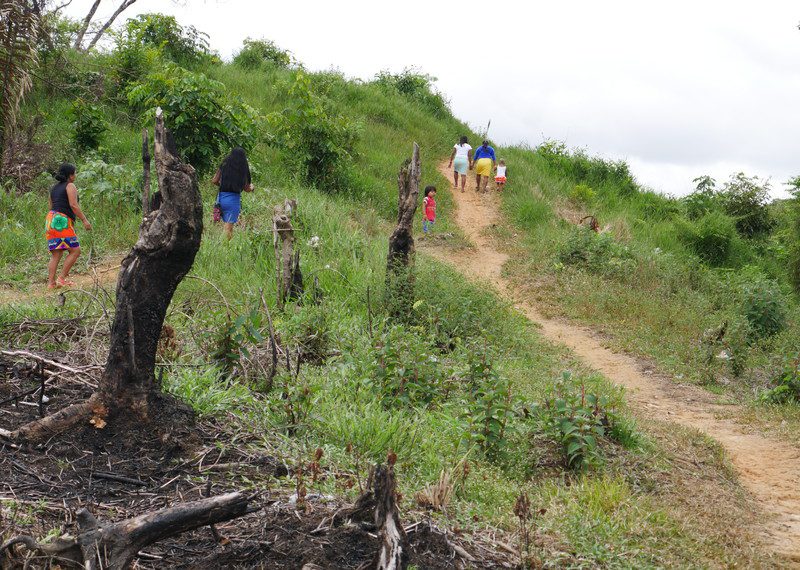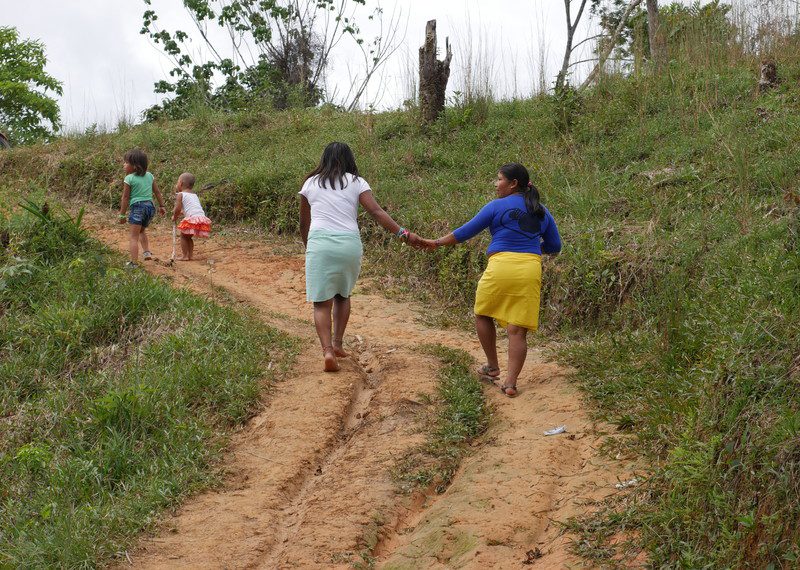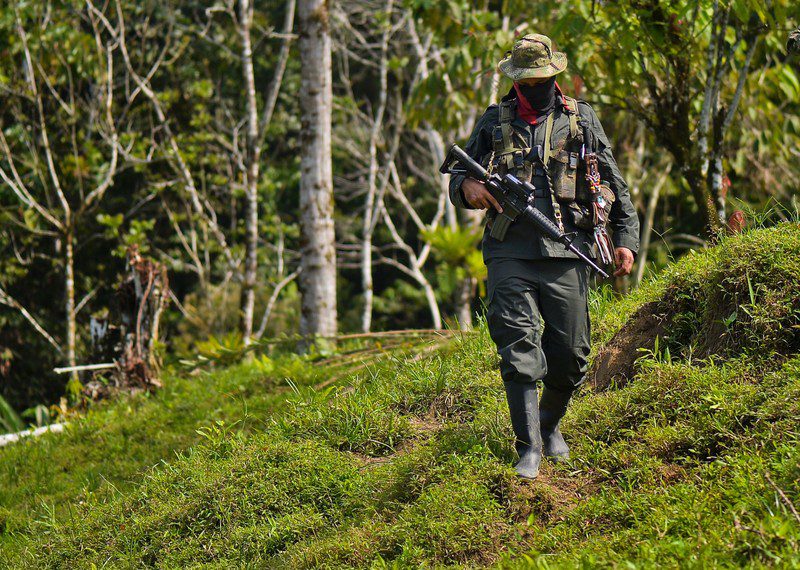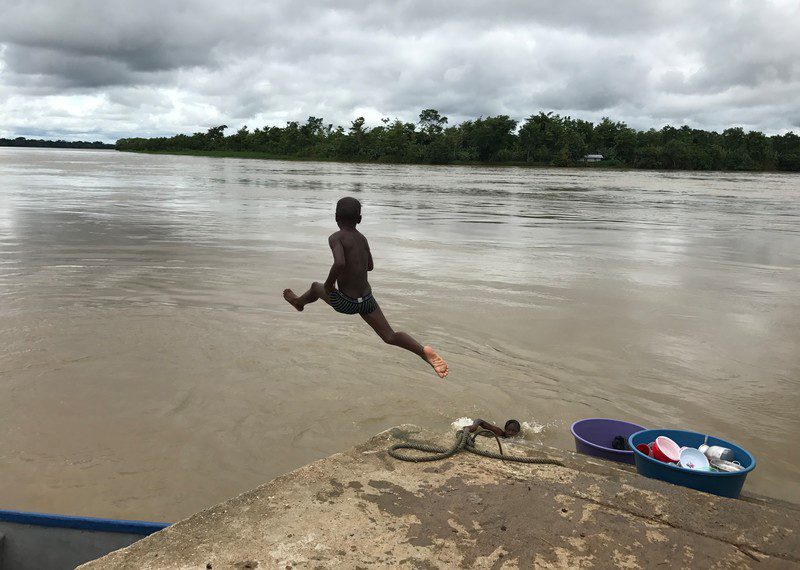A year on from the signing of the Peace Agreement with the Revolutionary Armed Forces of Colombia (Fuerzas Armadas Revolucionarias de Colombia, FARC), other guerrilla and paramilitary groups are wrestling for control of parts of the country in conflicts that are wreaking havoc on the lives of ordinary Colombians, Amnesty International said in a new report today.
Years of solitude continue explores how the Colombian Peace Agreement, signed on 24 November 2016, is having a very limited impact on the lives of scores of Indigenous and afro-descendant communities in the department of Chocó – where 60 percent of the population are registered as victims of the armed conflict.

The Peace Agreement was meant to end the 50-year armed conflict that had resulted in the deaths of more than 220,000 Colombians and displaced nearly seven million people.
“Although the number of civilian deaths has gone down since the Peace Agreement between the Colombian government and the FARC was signed, armed conflict is still very much the reality for millions across the country,” said Salil Shetty, Secretary General at Amnesty International.
Although the number of civilian deaths has gone down since the Peace Agreement between the Colombian government and the FARC was signed, armed conflict is still very much the reality for millions across the country
Salil Shetty, Secretary General at Amnesty International
“In departments such as Chocó, the state is nowhere to be seen and entire communities are left at the mercy of other guerrilla and paramilitary groups. There is still a lot more work to be done for the peace process to make any real difference to people’s lives.”
“Colombia is at a major crossroads. If the government fails to take this opportunity to protect communities who have been terrorized by armed groups for so long, the future will continue to look bleak. What authorities should do is ensure both that the Peace Agreement is properly implemented and that further steps are taken to ensure guerrilla and paramilitary groups stop terrorizing people.”
Colombia is at a major crossroads. If the government fails to take this opportunity to protect communities who have been terrorized by armed groups for so long, the future will continue to look bleak
Salil Shetty, Secretary General at Amnesty International
Amnesty International visited a number of towns in the department of Chocó in west Colombia – a resource-rich area targeted by armed and paramilitary groups – and spoke to Indigenous and afro-descendant communities about how the slow implementation of the peace process and the presence of other groups in their territory, coupled with the absence of the state, is affecting their lives. Our research found that:
- Thousands have been forced to flee their homes out of fear of the various armed groups operating in the area. Internally displaced Indigenous and afro-descendant communities are particularly vulnerable as they have had to leave their livelihoods behind with no state protection and support.
- In some cases, communities moved to nearby, dangerous areas – often to overcrowded housing, without access to fresh water nor sufficient food or prospects to return home.
- Human rights defenders and community leaders who have reported the abuses have suffered threats and even been killed. One of the latest victims is Aulio Isaramá Forastero, an Indigenous leader from Chocó, who was allegedly killed by members of the National Liberation Army (Ejército de Liberación Nacional, ELN) on the night of 24 October.
- Reports of gender violence are also pervasive in the area, although many women and girls are not speaking up about the abuse out of fear.

“If (the Peace Agreement) were true, there wouldn’t be armed groups in our land. The government makes an agreement with the FARC but what about the ELN, what about the paramilitaries? Even the army when it goes to the land, they hurt the Indigenous population,” said an Indigenous female victim of internal displacement from Chocó.
On 2 May 2002, nearly 120 civilians, mostly children, were killed in one of the worst massacres during a confrontation between the FARC and paramilitaries over control of local territories in the town of Bojayá, Chocó. Local organizations also blame the authorities for failing to listen to the many reports of abuses coming from local communities years before the massacre.

Fifteen years later, local communities are still living at the mercy of armed groups, including the ELN and paramilitaries, and feel abandoned by the state, which has taken no action to ensure that people are safe from the groups operating in the area and that the abuses are not repeated.
“The many challenges that are intrinsic to this peace process cannot be a justification for the state failing to take action to make it work and keep civilians safe,” said Salil Shetty.
The many challenges that are intrinsic to this peace process cannot be a justification for the state failing to take action to make it work and keep civilians safe
Salil Shetty, Secretary General at Amnesty International
“The only way to ensure these crimes do not take place again is for all measures included in the Peace Agreement aimed at protecting victims to be implemented properly. Investing more resources in the units responsible for protecting the local population, investigating abuses and publicly acknowledging that paramilitary groups are still active in the area would be some good first steps.”



